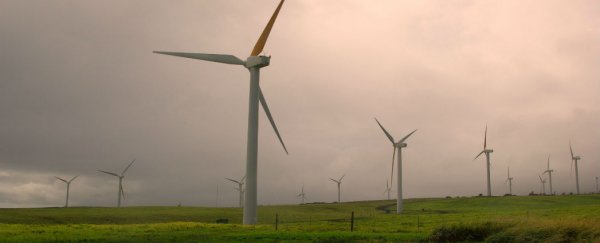A bill passed by the Hawaii Legislature last week has stated that 100 percent of the state's electricity will be generated by renewables by 2045. If achieved, it will make Hawaii the first state in the US to run entirely on sustainable energy sources.
"This is a significant step in our effort toward reducing Hawaii's dependence on expensive imported oil and putting the state on the path toward greater energy, environmental and economic security," Hawaii State Energy Office administrator, Mark Glick, told the press.
The bill will need to be approved by Governor David Ige, and he has until the end of June to sign it, but if he does, Hawaii would need to start generating its electricity from a combination of hydroelectric, biomass, geothermal, hydrogen fuel cells, ocean wave and tidal action, wind, solar and other energy sources, says Bobby Magill at Climate Central, which will replace oil as the source of the majority of their electricity.
The state is reportedly ahead of its timeline in reaching its goal of becoming 40 percent renewable by 2030, and the bill proposes that the sustainable energy increments advance as follows:
- 10 percent of its net electricity sales by December 31, 2010;
- 15 percent of its net electricity sales by December 31, 2015;
- 30 percent of its net electricity sales by December 31, 2020;
- 40 percent of its net electricity sales by December 31, 2030;
- 70 percent of its net electricity sales by December 31, 2040; and
- 100 percent of its net electricity sales by December 31, 2045.
Like Georgetown in Texas, which is working on getting itself to 100 percent renewables too, the motivation here isn't entirely altruistic, as Magill explains:
"Hawaii has more than climate change in mind in completely converting to renewables. The state's goal, according to the bill, is to stop importing fuel. The state imports about 93 percent of all its energy, making its residential electric power rates among the most expensive in the nation - about 175 percent of the U.S. average. Already, the state gets about 22 percent of its electricity from renewables, mostly from wind and solar."
While the objective seems pretty lofty - and it is - officials in Hawaii are confident they can get it done by 2045, so long as they can get the infrastructure in place. "We don't probably have the technology today to do everything," Jodi Leong, a representative from the Hawaii governor's office, told the press last week. "We do have some time to do this."
A little healthy competition between states never hurt anyone. Especially when the environment is the ultimate winner.
